INVITED SPEAKERS
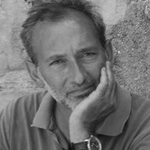 |
João Miguel Sanches Lecture Title: Biological Quantification from Imaging J. Miguel Sanches (JS) received the E.E., M.Sc. and Ph.D. degrees from the Lisbon Institute of Technology (Instituto Superior Técnico (IST) ), Technical University of Lisbon (UTL), Portugal, in 1991, 1996 and 2003 respectively and the habilitation (agregação) in 2013 by the University of Lisbon (UL) in Biomedical Engineering. JS teaches at the Department of Bioengineering (DBE) at the IST and before he was at the Department of Electrical and Computer Engineering (DEEC) where has taught in the area of signal processing, systems and control. JS has been actively involved in the course of Biomedical Engineering advising master and PhD thesis on the area of Bioengineering, specially, on Biomedical engineering. |
|
|
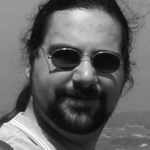 |
Gaby G. Martins Lecture Title: Optical tomography in Developmental Biology - an Open-source approach Born in Bragança (Portugal) in 1971 I grew up in Cascais where I still live with my mate + clutch of the 4 most beautiful embryos ever produced (Dé, Dany, JP & Bá)! Growing up, summers were often spent in the countryside in Bragança in contact with nature...naturally I became a Biologist! Graduated in Biology in 1994 from the Faculty of Sciences, University of Lisbon, I followed a post-graduation in Developmental Biology from Lusofona University, studying gastrulation in sea urchins. In 2004 I finished my PhD in Anatomy and Cell Biology from the School of Medicine and Biomedical Sciences of the State University of New York, at Buffalo NY - USA studying cell migration in 3D. As an undergrad I also lectured in high-schools, and during my PhD worked part-time as assistant of Confocal Microscopy Lab of SMBS/SUNY-Buffalo. In 2004 I returned to Portugal to teach Developmental Biology at the Instituto Piaget - Almada. In 2006 I started a post-doc at FCUL, and collaborated as an imaging specialist at the Instituto Gulbenkian de Ciencia in Oeiras. In 2008 I became a researcher at the Centre for Environmental Biology (CBA/FCUL), during which I served also as a member of the Executive Committe (2009-2010), and as a manager of the FCUL's Microscopy Facility. I have authored several articles and book chapters on developmental and cell biology and Bioimaging, and currently run a Master’s level course on Bioimaging at FCUL, participate and organize several national and international advanced courses on microscopy. My personal interests include music, photography, home-improvement, mechanics and spending time with our brood! |
|
|
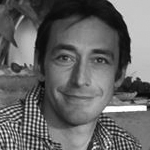 |
Massimo Marenzana Lecture Title: High-throughput 3D imaging of cartilage and bone in experimental murine models of osteoarthritis Dr Marenzana's research is concerned with the basic biological mechanisms by which connective and skeletal tissue cells respond to the mechanical environment by remodelling the structure and composition of their extracellular matrix and how these built-in, evolutionary mechanisms are affected by pathological conditions. MORE INFO: http://marenzana.openwetware.org
|
|
|
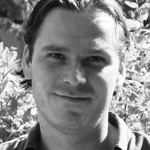 |
Twan Lammers Lecture Title: Non-invasive imaging in drug delivery and tissue engineering Twan Lammers obtained a DSc degree in Radiation Oncology from Heidelberg University in 2008 and a PhD degree in Pharmaceutics from Utrecht University in 2009. In the same year, he started the Nanomedicine and Theranostics group at the Department of Experimental Molecular Imaging at RWTH Aachen University, which currently consists of ~15 graduate students and post-docs. Since 2012, he has also been appointed as a part-time assistant professor (10%) at the Department of Controlled Drug Delivery at the University of Twente. His primary research interests include drug targeting to tumors, image-guided drug delivery, image-guided tissue engineering, and functional and molecular imaging of angiogenesis and inflammation. He has authored ~90 research articles and reviews (>550 cumulative impact; >2200 citations), and has received several prizes and awards (including an ERC Starting Grant). |
|
|
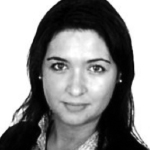 |
Marta Candeias Lecture Title: Funding Perspectives on Applied Biomaging in H2020 Marta Candeias has a degree in Biologic Engineering from Instituto Superior Técnico (IST) and Master in the same area, specialized in advanced materials. She is National Contact Point (NCP) for European Union programs - 7th Framework Program of Research & Technological Development and Horizon 2020 – since 2009 in nanotechnologies, advanced materials and advanced manufacturing thematic areas and also for support to SMEs. Between 2007 and 2009 she has done research in IST in product development and participated in some national and European research projects. Since 2009 she has been also participating in integration and capacitation of efforts for NCPs projects in the thematic areas mentioned above (SMEsGoHealth, TrasnCoSME, NMP TeAm and NMP TeAm 2).
|
|
|
 |
Max Viergever Lecture Title: Grand challenges in biomedical image analysis Max A. Viergever received the MSc degree in applied mathematics in 1972 and the DSc degree with a thesis on cochlear mechanics in 1980, both from Delft University of Technology. From 1972 to 1988 he was Assistant/Associate Professor of Applied Mathematics at this university.
|
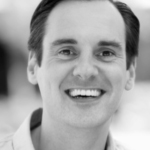 |
Bram Herpers Lecture Title: Advanced high-content analysis of 3D cell cultures for compound screening and profiling Bram Herpers joined OcellO in 2013 following an extended post-doc in Toxicology at the Leiden Academic Center for Drug Research. Trained as a Biologist, he completed his PhD at Utrecht University (2006) and focused on microscopy and molecular and cell biology. Assay and technique development have always been his major interests. As such, he developed multiple imaging and analysis techniques for high throughput screening of drugs, compounds and siRNAs at the LACDR. He continues to develop 3D assays that combine microtissue culturing techniques and image analysis pipelines as a COO together with the research team of OcellO, a CRO that specializes in 3D cell based assays for compound screening and profiling as a service for academia, biotech and pharmaceutical industries. |
Ophélie Lancry Lecture Title: Raman spectroscopy for Biomedical applications - PhD in 2009 – LASIR laboratory – Université de Lille in France : Micro-Raman characterization of materials |
|
| ORGANIZED BY: | CO-ORGANIZED BY: | SUPPORTED BY: | |
 |
Rua do Campo Alegre, 823 4150-180 Porto - Portugal Tel +351 226 074 900 Email: bioimaging2014@ineb.up.pt |
  |
 |
